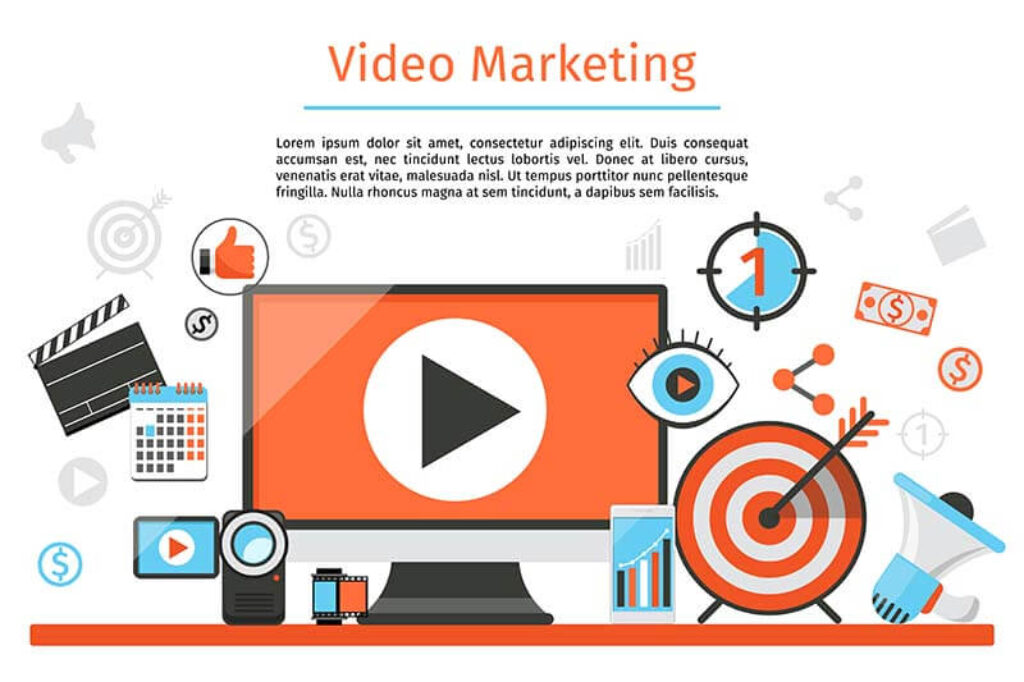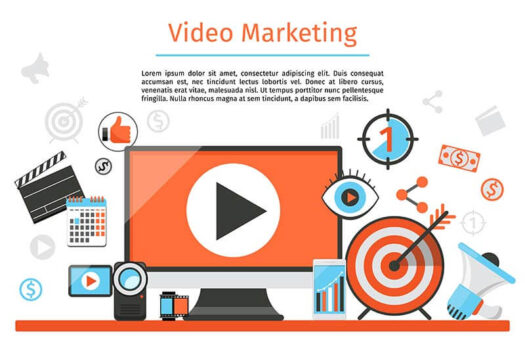In today’s digital age, video marketing has become an indispensable tool for businesses looking to boost their brand awareness and engage with their target audience. The power of video as a marketing medium lies in its ability to convey a compelling message, evoke emotions, and captivate viewers’ attention. This article delves into the impact of video marketing on brand awareness and engagement, shedding light on why businesses are increasingly turning to videos to enhance their marketing strategies.

The Rise of Video Marketing
The proliferation of video marketing can be attributed to several key factors. First and foremost, the rapid advancement of technology has made it easier than ever for individuals to create and share videos. The ubiquity of smartphones with high-quality cameras and the accessibility of video editing software have empowered businesses and individuals to produce professional-looking videos with relative ease.
Another significant driver of video marketing is the way people consume content. Today’s consumers have shorter attention spans and are more likely to engage with visual content than written text. In an era of information overload, videos can convey messages quickly and effectively, making them an ideal choice for catching and retaining the viewer’s attention.
The Impact on Brand Awareness
Video marketing can have a profound impact on brand awareness. When businesses create and share videos that are not only informative but also entertaining or emotionally resonant, they can leave a lasting impression on their audience. Here are some key ways in which video marketing contributes to brand awareness:
1. Visual Identity: Videos can help establish a brand’s visual identity. Through consistent use of colors, logos, and visual elements, videos can reinforce the brand’s image, making it easily recognizable to consumers.
2. Storytelling: Video allows for powerful storytelling, enabling brands to share their narratives and values in a way that resonates with the audience. This emotional connection can create a lasting impression and foster brand loyalty.
3. Social Sharing: Compelling videos are more likely to be shared on social media platforms, expanding their reach and increasing brand exposure. This organic sharing can lead to a snowball effect, amplifying brand awareness.
4. Search Engine Optimization (SEO): Video content, when optimized properly, can improve a brand’s visibility in search engine results. Google and other search engines often prioritize video content, making it easier for potential customers to discover the brand.
5. Educational Content: Brands can use video to educate their audience about their products or services. Providing valuable information through videos positions the brand as an industry authority and increases trust.
6. Personalization: Personalized video content, addressing the viewer by name or offering tailored recommendations, can create a more personal connection with the audience. This level of personalization enhances brand recognition and engagement.

The Impact on Engagement
Engagement is a crucial metric in the world of digital marketing, as it indicates the level of interaction and connection between a brand and its audience. Video marketing has the power to significantly enhance engagement through several mechanisms:
1. Emotional Connection: Video content can evoke strong emotions, making it easier for viewers to connect with the brand on a personal level. Whether it’s humor, empathy, or inspiration, emotions drive engagement.
2. Longer Time Spent: Viewers tend to spend more time engaging with video content compared to other forms of media. This increased time spent with the brand’s message can lead to a deeper connection and understanding.
3. Interactivity: Interactive elements in videos, such as clickable links and embedded forms, allow viewers to take immediate action, such as signing up for a newsletter or making a purchase.
4. User-Generated Content: Brands can encourage user-generated content by inviting customers to create and share their videos related to the brand’s products or services. This not only boosts engagement but also builds a sense of community around the brand.
5. Live Streaming: Live video streaming allows for real-time engagement with the audience. Brands can conduct Q&A sessions, product launches, or behind-the-scenes glimpses, fostering a sense of exclusivity and immediacy.
6. Social Media Engagement: Video content is highly shareable on social media platforms, and the comments and interactions it generates contribute to ongoing engagement and conversations.
Measuring the Impact
To gauge the impact of video marketing on brand awareness and engagement, businesses need to track key performance indicators (KPIs). These may include metrics like views, click-through rates, shares, likes, comments, and conversion rates. By analyzing these data points, businesses can fine-tune their video marketing strategies for optimal results.
In conclusion, video marketing has become a cornerstone of modern marketing strategies due to its effectiveness in boosting brand awareness and engagement. The visual and emotional appeal of video content, coupled with its ability to convey information quickly and entertainingly, make it an essential tool for businesses looking to connect with their target audience. As technology continues to advance, and consumer preferences evolve, video marketing is poised to remain a vital component of successful branding and marketing efforts. Businesses that harness the power of video can not only enhance their brand’s visibility but also create lasting connections with their audience, ultimately leading to greater success in the digital landscape.





